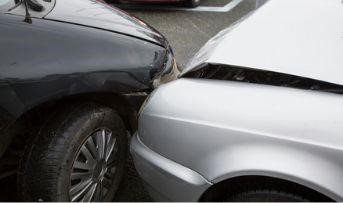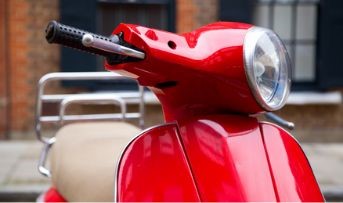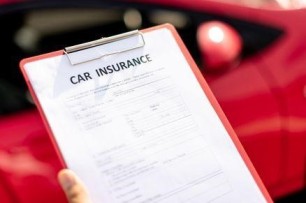General Insurance Blogs, Articles & Updates by - Magma HDI
Have us call you
- RENEW YOUR POLICY
- BUY NEW POLICY

Complete guide on Collision Damage Waiver
Travelling by car is one of the most exhilarating experiences that you can have. It is fun with friends, family, or even your partner. It adds to the charm of the journey and makes everything all the more exciting. However, owning a car can be a hassle in itself. You need to have enough money to purchase and regularly maintain it.
Renting a car is one of the prevalent alternate options for hassle-free driving in India. You can easily rent a car in India for a weekend getaway, road trip, or family emergency.
But what happens if any damage is done to the rented car? Well, that's when the Collision Damage Waiver comes into play. If you do not know much about it, this article will help you navigate it. It is like private car insurance India for your rented car. Let's find out more about it.
What is a Collision Damage Waiver?
As the name suggests, the Collision Damage Waiver protects your rented car if a collision occurs. This is an insurance cover that is easily bought with a rented car. You will be waived off all the damage fees or compensation when a collision occurs. However, every insurance company must have different terms and conditions for this coverage. You should read them carefully before you buy a Collision Damage Waiver.
Although renting a car in India is easy, simple, and reliable, most details are still unknown to the general public. One such detail is insurance coverage. It is crucial to always opt for private car insurance India for your rented car. This will protect you from the extra fees or bills you need to pay in case of a collision.
Imagine this hypothetical situation. You are driving an extremely narrow or hilly road with your friends, and you fail to see a coming vehicle and lose control of your car. This may cause you to hit your car on a pole or tree, leading to several dents and damages to the rented car.
Now, what will happen in case you have a Collision Damage Waiver?
What is covered under the Collision Damage Waiver?
Several things are included in the cover of your rented car under the Collision Damage Waiver or CDW. These are:
● Damages or dents to the rented car
● Theft or loss of the rented car
● Towing the rented car to the nearest garage
What is not covered under the Collision Damage Waiver?
Before purchasing the insurance cover, you should also have a brief idea about the things not included in the cover. These are:
● Violation of traffic rules and the damages caused due to that
● Damage to third-party properties
● Damage to other people
● Any damage to the things present in the rented car like gearbox, wheels, windshields, etc.
Renting a car is a growing norm among the new generation. You can easily rent a car for yourself with a single click. The whole process is available to all without any hindrances. However, you must consider all the possible options before you buy the Collision Damage Waiver for your rented car. It has many benefits that can save you from paying the bills of damage to the car. It is recommended to always be on the safer side and purchase private car insurance India coverage in advance before you use the rented car.
Click HERE to buy reliable private car insurance India for your rented car
Disclaimer: The information provided above is for illustrative purposes only. To get more details, please refer to policy wordings and prospectus before purchasing a policy.

Diving deep to understand the importance of RPM in a bike
The rotation speed of the engine crankshaft which delivers power to the rear wheel via the gearbox, is the RPM of the bike. A higher engine RPM is required for better performance of the motorcycle. Since RPM is not a very known term for most people, let's dive deeper to understand its importance.
What is the importance of RPM in a bike?
RPM directly influences the comfort level you will experience when riding the bike. With the higher engine RPM, the speed will be much faster. Riding in the medium RPM range is suitable for the smoothest ride possible. Better comfort levels are achieved with a lower RPM, leading to higher fuel efficiency, especially in shorter city rides.
The RPM levels directly affect your comfortable riding experience, how much gas you use, and how well your bike performs in the long run. To say this, riding at high engine RPM for an extended period will increase the stress on the bike. It is dangerous for the engine and also for the well-being of the bike too.
With every bike, the RPM level is different. If you want to constantly ride at a higher RPM, opt for motorcycles specially built for this purpose. They are made for the tracks to run at higher RPMs.
What difference does it make?
RPM has a significant effect on the performance of the bike. If you run your motorbike at a low RPM, your bike will give you the best performance. Similarly, if you run your bike at a higher RPM, it charges up the engine to perform at maximum power, resulting in many vibrations. Experts also say that if you drive your bike at a higher RPM, you will have to fill up the gas tank more frequently because the fuel intake increases significantly with speed and RPM.
Riding your bike at the correct RPM for engine speed is essential. There are several benefits associated with doing so. As already mentioned, it will give you greater comfort on the ride, keep the bike healthy, and save you the money you might have to spend on fuel if you're constantly riding at a higher RPM.
With the increasing fuel prices, this is a lucrative deal to take care of your bike so that it consumes less fuel. It might not make a difference one or two times, but collectively it will make a massive difference over a long period.
Youngsters or people who ride for an adrenaline rush thrash their bikes at higher RPM. To figure out an ideal RPM range, know the maximum RPM range your bike can ride at. Now divide it by two. This is the average RPM you should ride most of the time; for example, if your top speed is around 8000 RPM, the ideal range is 4000 to 5000.
RPM is an essential factor that influences the health of your bike, which in turn, indirectly affects the cost of maintenance. If you're constantly riding at a higher RPM, it is very unhealthy for your bike, and you will have to spend more to maintain it.
Always ride safely within the specified RPM range, but if you are willing to drive at a higher RPM, purchasing a bike that supports it is the best. Otherwise, operating in the ideal RPM range is cool! Make it a point to invest in comprehensive bike insurance to enjoy financial benefits in the time of emergency when your bike meets with an accident.
Click HERE to buy bike insurance to keep your motorcycle protected from mishaps.
Disclaimer: The information provided above is for illustrative purposes only. To get more details, please refer to policy wordings and prospectus before purchasing a policy.

Best features to look for when purchasing a new two-wheeler for women
Two-wheelers are the most convenient mode of transport in India. They are budget-friendly, easy to handle, and come with multiple features and various designs. This makes them a popular choice amongst Indians to travel on narrow, inadequately maintained roads with constant traffic due to poor driving etiquette.
While vehicles are no longer designed to fit the fancy of a specific gender, it is easier for women to choose the suitable model, manoeuvre it and ride on the road.
If you are a woman or even a beginner looking to buy a new two-wheeler, here are some features you should look for to find your perfect ride.
1. Budget:
It is only possible to purchase after deciding the budgeted expenditure. Keep in mind the expected utility, life of the vehicle, and additional expenses of fuel, maintenance, and insurance while fixing a budget. With the plethora of options available, it should not be difficult to find a 2-wheeler within your budget, which can range upwards from ₹50,000. However, fixed expenses like 2 wheeler insurance online and servicing are additional costs that are often overlooked.
2. Build and size:
Of the multiple brands in the market, it is challenging to differentiate between models since they are built similarly. Riding comfort is highly dependent on the size of the two-wheeler. Make sure to sit on a stationary model and check if your feet touch the ground, which is a must in situations where sudden brakes are to be applied.
3. Vehicle weight:
Choosing a two-wheeler heavier than you can handle is the worst mistake a rider can make. A test ride and a general inspection will make you aware of its weight and your capability to handle it. By ensuring you can control its weight, you can prevent accidents, put the vehicle on and take it off the centre kickstand easily.
4. Mileage:
Two-wheelers usually provide a mileage of upwards of 35 kmpl. The higher the mileage, the greater the value derived. The advertised mileage is to be considered only when driving on highways. For congested cities, most two-wheelers provide a 35-50 kmpl mileage.
5. Engine capacity:
The power of the engine or engine capacity determines the fuel efficiency and smooth running of the vehicle. Scooters with an engine capacity of 110cc to 150cc are popular for city rides or short-distance travel for women to work and visit the supermarket.
6. Storage capacity:
Unlike a car, a two-wheeler is relatively compact, providing less storage space underneath the seat. Usually, the under-seat storage accommodates a helmet and a few other things. Presently, the largest under-seat storage available is 32 litres. While no additional designated storage space exists, you may have a top storage box fitted at your back seat.
7. Auto start:
Just like automatic transmissions are preferred over manual transmissions in cars, a two-wheeler can have a kick-start or an auto-start. Auto-start is a convenient way to start the two-wheeler by engaging the brakes, accelerating, and using the auto-start button. Kick-start requires physical effort to run the vehicle and is generally not preferred. However, purchasing a two-wheeler that provides both options is best in case one of the mechanisms fails.
Considering the ease of riding a two-wheeler, it is accessible to women of all ages in different economic strata. By following traffic rules diligently and purchasing the best-suited two-wheeler along with 2 wheeler insurance online, you can ensure safe driving and fewer accidents and allied financial burdens.
Click HERE to buy 2 wheeler insurance online.
Disclaimer: The information provided above is for illustrative purposes only. To get more details, please refer to policy wordings and prospectus before purchasing a policy.

List of car insurance exclusions that you need to be aware of
Car insurance is mandatory by law for every car owner in India. Also, it provides us adequate protection against accidents and third-party cover. However, some exclusions or incidents are not covered under a standard car insurance policy. Some insurance agents might not tell you about them explicitly to sell more policies, but you need to be aware of all the essential terms and information at the time of purchase of the policy.
Let us go through some of the key exclusions.
1. Damages to tyres and electrical components:
A car insurance policy does not cover the tyres of your car. They are bound to wear and tear with regular usage and time. Also, your insurance policy will not cover any damage to your car's electrical components and wiring. These include lights, music system, central locking system, etc. Damages can occur because of mishandling, rough weather, short-circuiting, pests, rodents, etc., but you have to vent your pockets to cover these damages on your own.
2. General wear and tear:
Your car insurance policy will not cover your car's general wear and tear that happens with time, usage, and weather conditions. Hence, the policy will exclude damages such as scratches and dents, rusting of the body, etc.
3. Damages caused by man-made events such as war:
Your car insurance policy will not cover damage to your car because of man-made events such as a war. It will also exclude damages from a nuclear explosion, chemical attack, terror attack, etc.
4. Driving under the influence of alcohol:
Your insurance company would not be liable to accept your claim if you or your driver were driving under the influence of alcohol or any other toxic substance such as drugs at the time of the accident. We advise you not to drive after drinking. Instead, take a cab to your destination and stay safe.
5. Ape hangers:
Half of the bike enthusiasts consider these the most comfortable set of handlebars available in the market. For tall riders, these can be the most comfortable, while for others, if it is not set according to their height, the hands and back would go numb. These give a more upright position and eliminate the need to hunch over. These are supposedly the best handlebars in the market for long road trips.
6. Intentional damage:
Your car insurance policy will exclude any claims against damages to the car or any property caused intentionally by you.
7. Expired policy:
Always renew your car insurance policy well in time because your claim will not be passed if the accident occurs after the expiry of your policy. The insurance company will reject your claim even if you have applied for renewal, but your policy was not active at the time of the accident.
8. Oil leakage:
Your car insurance excludes damage to your engine due to leakage of oil.
9. Pledging of car:
If you have pledged your car to someone else, and the person meets with an accident, the insurance company will not pass your claim.
10. Invalid driving licence:
An insurance company does not cover you if you were driving without a valid driving license at the time of the mishap. It is recommended to have valid documents handy while driving a car.
11. National territory:
An insurance company is liable to pay for your damages only if you sustain them while driving in the national territory of India. Any damage outside India, say Nepal, will not be covered under the policy.
12. Re-appeal clause:
You have 12 months to appeal to the court if you feel that the insurance company has wrongly rejected your insurance claim. After this time period, you cannot appeal against the insurance company's rejection.
One must always be aware of the above situations under which your car insurance policy will not protect you. However, protection against some of the above incidents can be bought by buying a zero-depreciation policy instead of a regular car insurance policy.
You can also buy separate covers and add-ons such as an invoice cover, engine protector cover, etc., which will give you added protection. Always ensure that you go for the best car insurance company in India that gives you a clear picture of all the inclusions and exclusions right at the time of purchase of the policy.
Click HERE to buy insurance from the best car insurance company in India.
Disclaimer: The information provided above is for illustrative purposes only. To get more details, please refer to policy wordings and prospectus before purchasing a policy.


